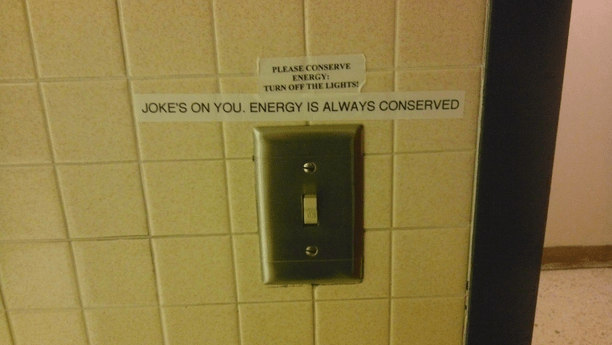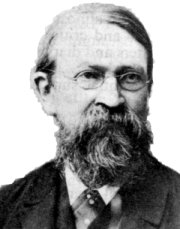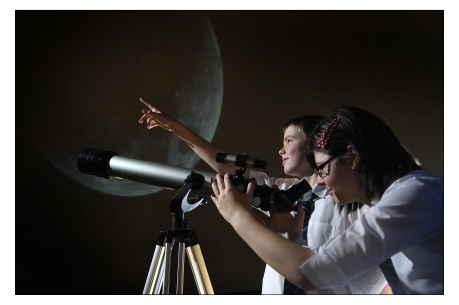The following acts as my introduction to the students’ notes on the Energy chapter.
What is energy?
Nobody knows what energy actually is and by pretending otherwise we actually do you the student a disservice. Not only are we ignoring the wonder associated with the idea, we are also denying you the opportunity to engage with the concept at any level beyond the superficial.
Bottom line; nobody gets energy because there’s nothing to get. Energy is not tangible (it is ‘an indirectly observed quantity’); you can’t hold it in your hand, you can’t weigh it on an electronic balance, you can’t see it, touch it, smell it etc. Yet when the universe was first created there was a certain amount of this put in to the mix (actually now that I think about it the mix itself was energy (with perhaps just a little dash of time)), and it’s all still there today. Its form can change, but the energy itself can’t ever disappear – no sirree bob.
It could be argued that it is in fact merely an accountant’s trick which enables him to ensure that all actions balance.
Consider the following analogy which I like to use.
If a child asks you ‘what is money?’ you could take a few coins out of your pocket and show them to the child and say ‘this in money’. Now fast forward a couple of decades; all transactions are now done electronically/online and all coins and paper money are no longer legal tender. Now how do you explain what money is?
Well it’s a means of payment for goods and services, right? Somebody sells you an orange and you agree to transfer into their account a set amount of this ‘money’. And now that the shopkeeper has this money in his account he can use it to buy something else. So in effect money is just a transferrable IOU.
Now energy is a bit like this, but there is only a certain amount of IOU’s in the universe and this was set when the universe first came into being.
To complicate matters further, since the early part of the last century we now know (thank you Albert) that all matter (‘stuff’) is basically energy in another form.
Anyone still with me?
All right, let’s listen to Richard Feynman give his take on it.
There is a fact, or if you wish, a law governing all natural phenomena that are known to date. There is no known exception to this law – it is exact so far as we know. The law is called the conservation of energy. It states that there is a certain quantity, which we call “energy,” that does not change in the manifold changes that nature undergoes. That is a most abstract idea, because it is a mathematical principle; it says there is a numerical quantity which does not change when something happens . . . it is a strange fact that when we calculate some number and when we finish watching nature go through her tricks and calculate the number again, it is the same. It is important to realize that in physics today, we have no knowledge of what energy “is.” We do not have a picture that energy comes in little blobs of a definite amount. It is not that way. It . . . does not tell us the mechanism or the reason for the various formulas.
The Feynman Lectures on Physics Vol I, p 4-1
When Feynman wrote,
“It is important to realize that in physics today, we have no knowledge of what energy is,” he was recognizing that although we have expressions for various forms of energy (kinetic, heat, electrical, light, sound etc) we seem to have no idea of what the all-encompassing notion of “energy” is.
The various forms of energy (½mv2, mgh, ½kx2, qV,mcT, ½I2, ½CV2, etc.) are abstractions not directly observable.
2007 American Association of Physics Teachers
Now with that interesting bit out of the way, let’s go see what we need to know for the exam.




